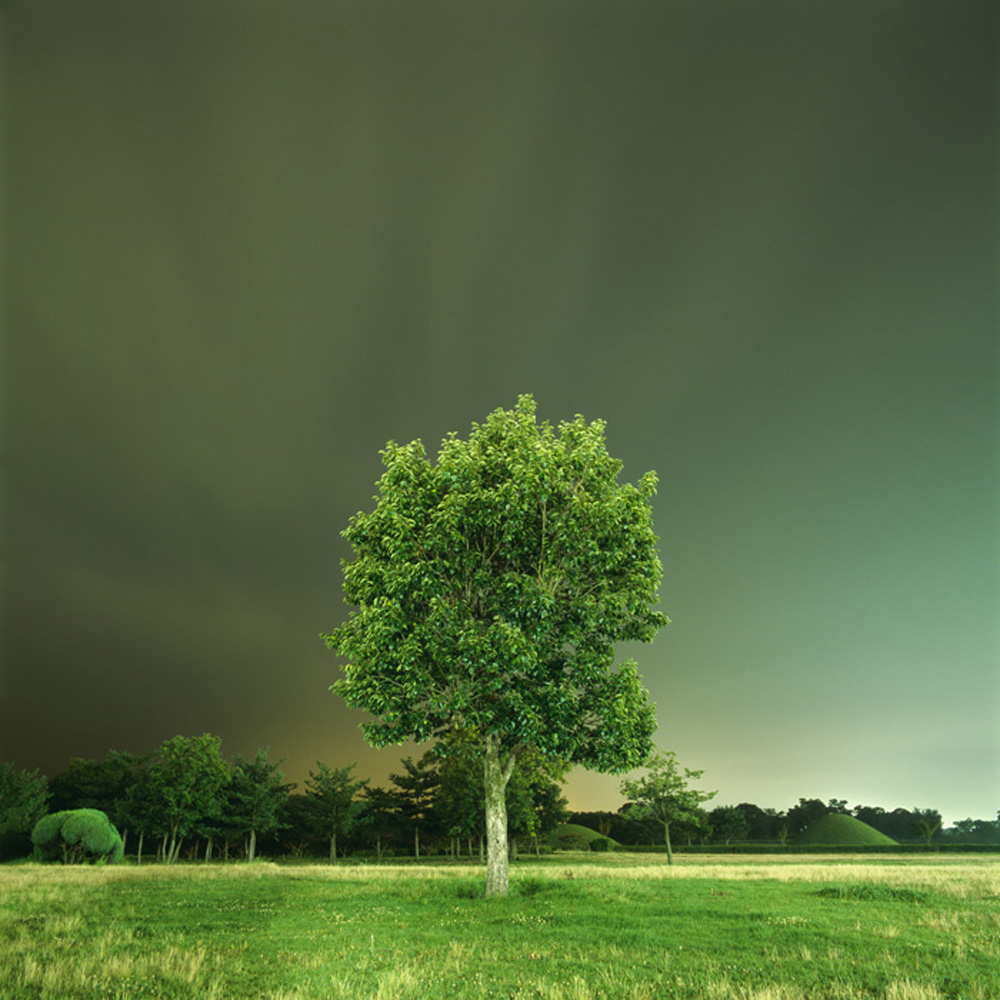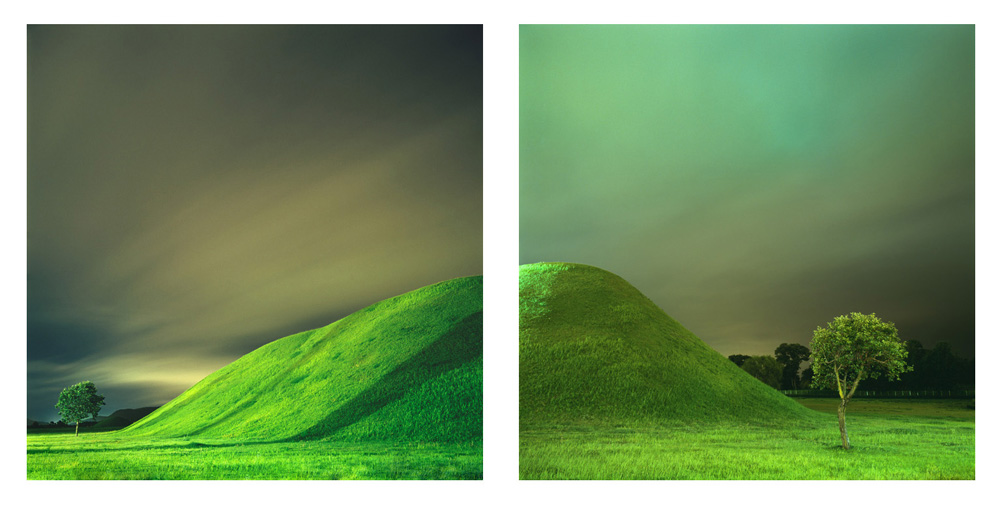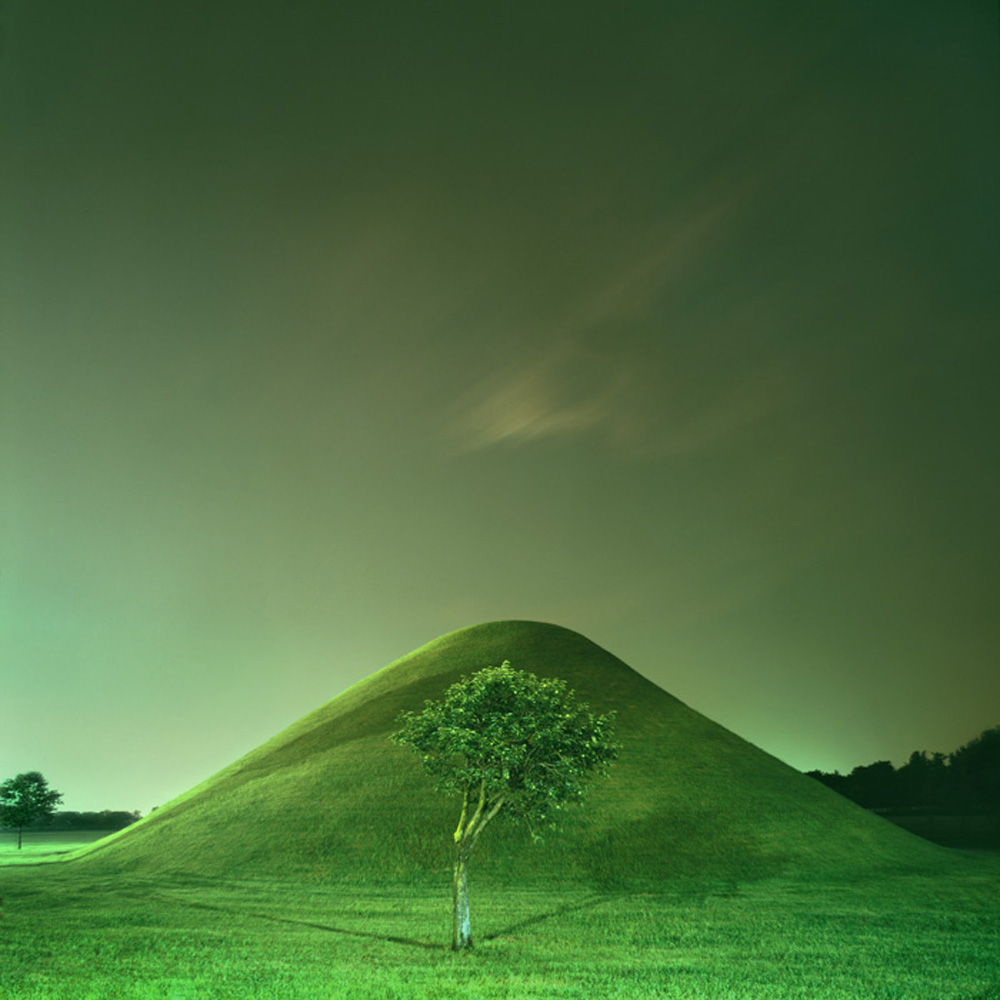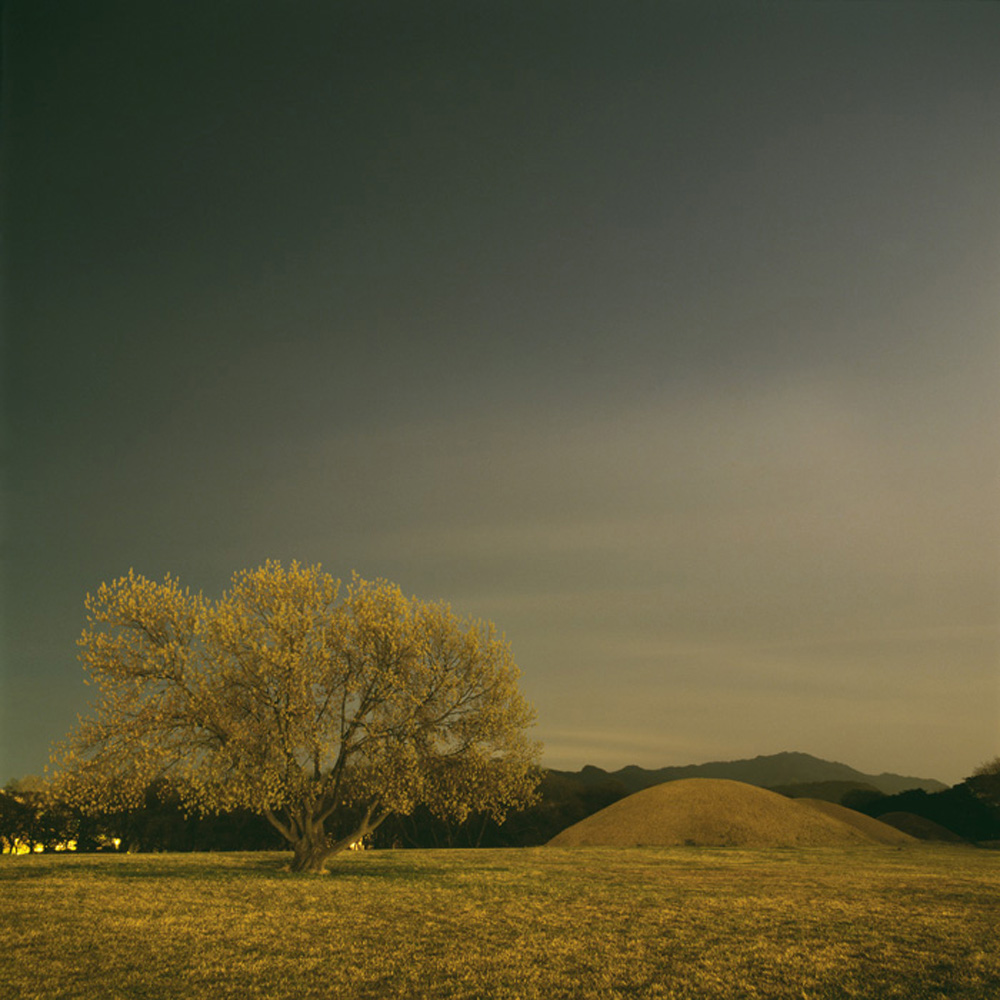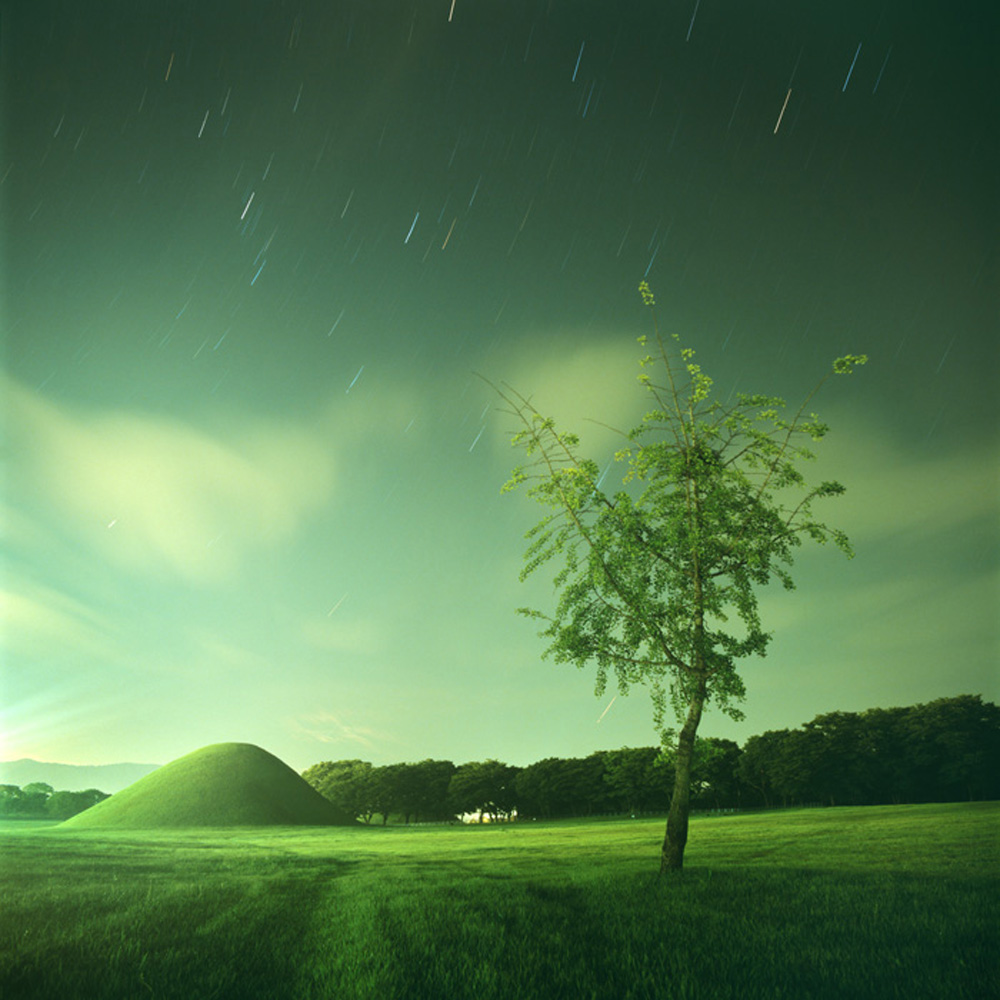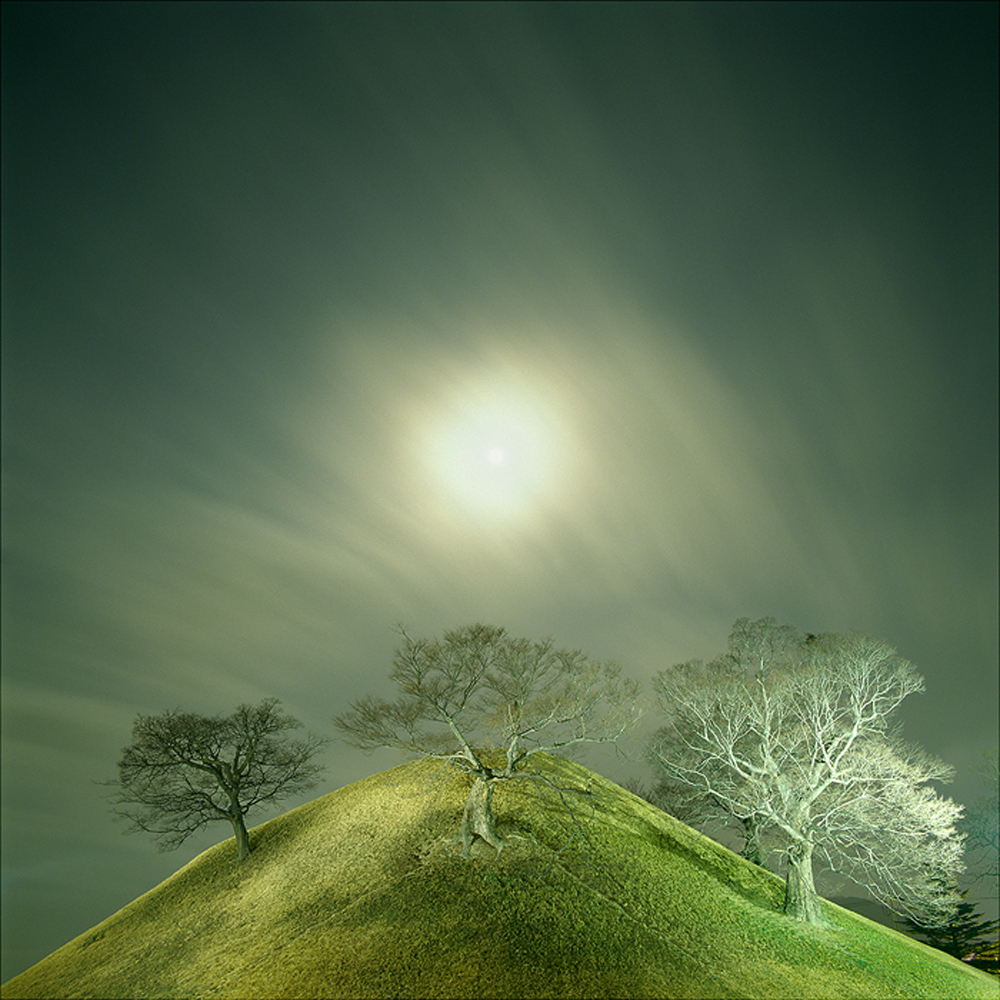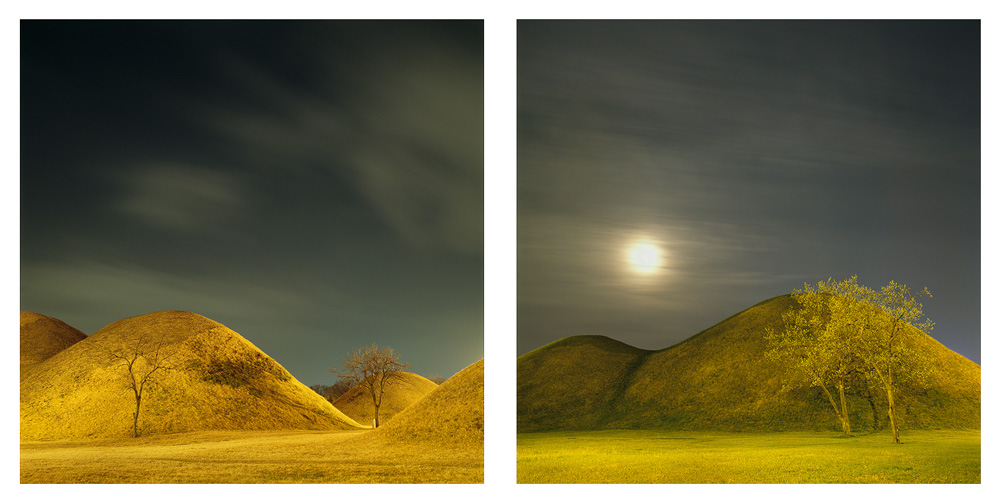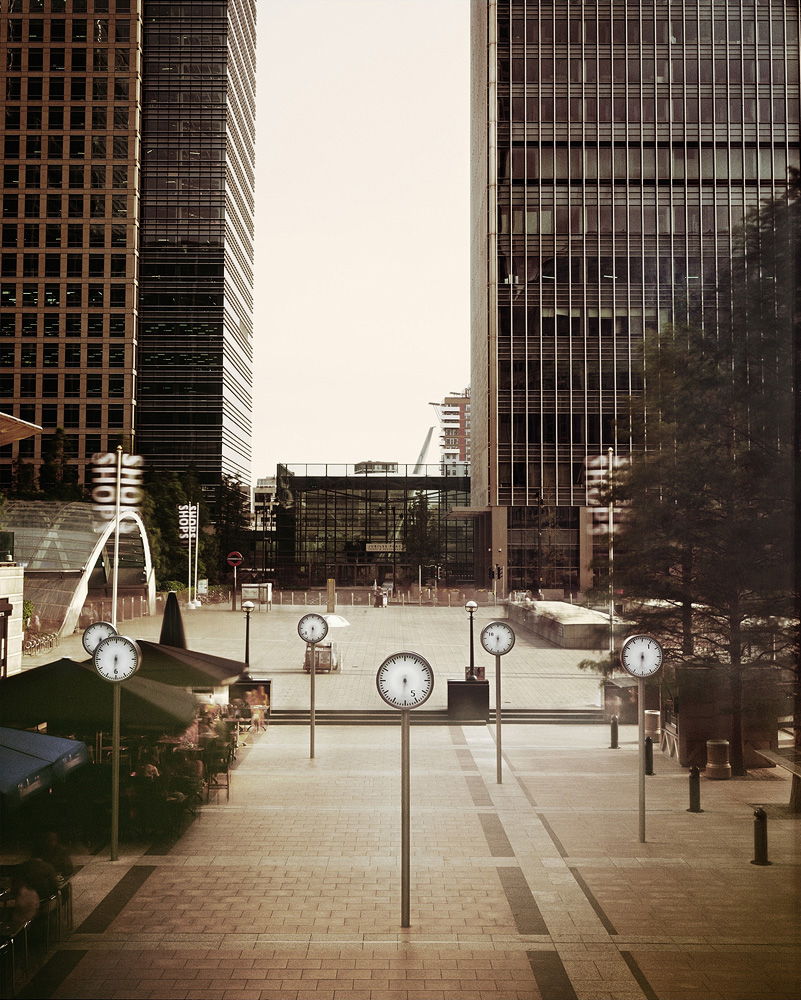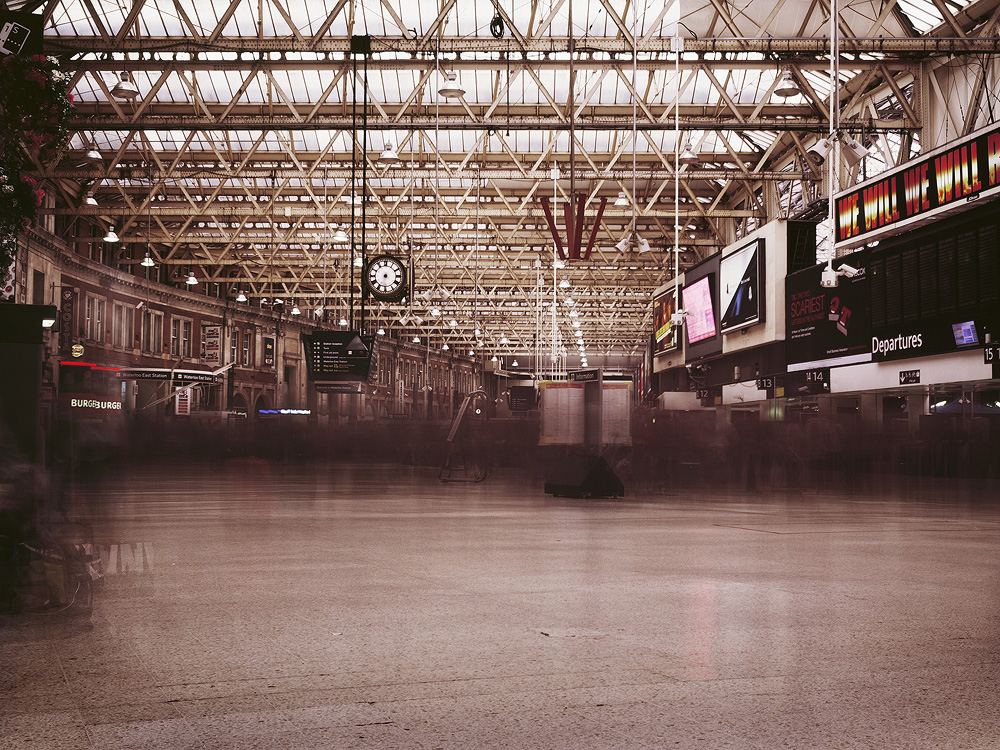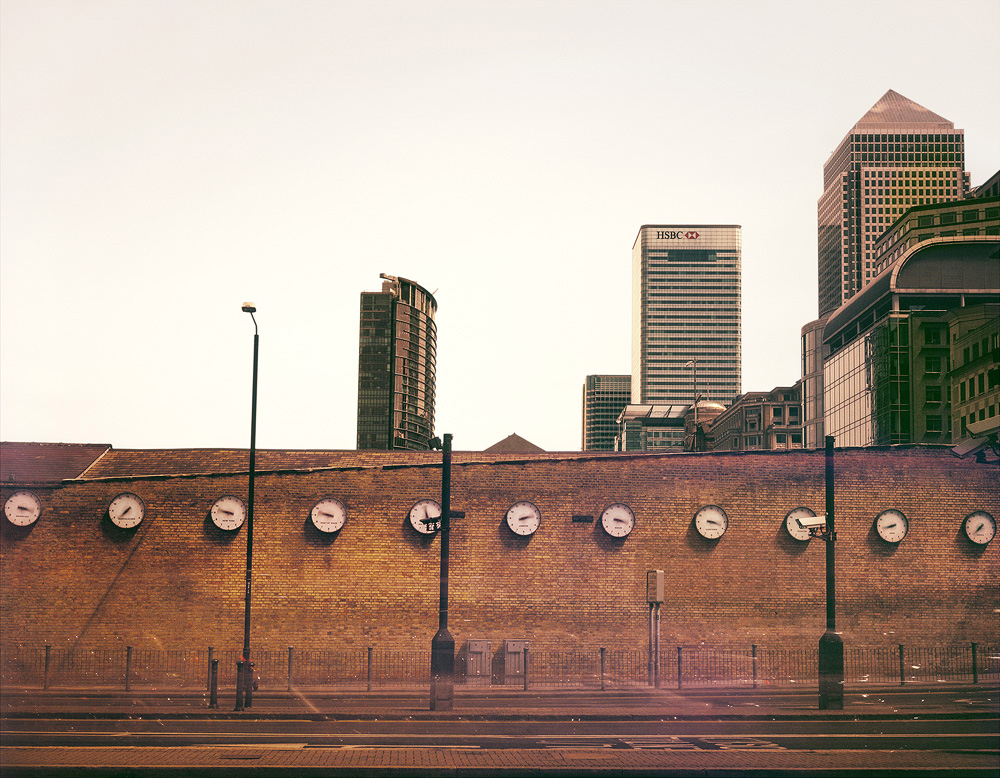Korea Week: Won-Chul Lee
Won-Chul Lee was born in Seoul, South Korea in 1975. He graduated from Seoul Institute of the Arts in 1999 and received a B.A at RMIT, Australia in 2002. He received an M.A. in Photographic Design at Hongik University (Korea) in 2007. He has held 15 solo exhibitions and participated in numerous group shows. Won Chul received many Grant and Prizes such as Song Eun Finearts Prize, Joongang Finearts Prize, Grant for Culture & Art Funds, and Surim Photo Prize and so on.
The Starlight-Gyeongju & Circle of Being: Trees and Graves
The Starlight-Gyeongju and Circle of Being are the series based on trees and graves as subject matters. The tree sprouts, blossoms and fruits from spring to autumn. Then, they are naturally fallen into the ground, decay into manure during winter, and again become to aliment the fresh green shoots in spring. Like the above, not only our gene, spirit, and lesson that have come from an ancestor but also our life itself lead to the next generation. To put this idea, trees and graves that are not dissimilar with handing down the pedigree of human-being has been in my work.
In general, trees stand for the life and graves are regarded as a representative object of the death. However, they can be considered inversely. Trees seem to be looked an organism, but there are also the countless and repetitive passing in trees for another life. Graves do not simply signify the end of life. Rather, they also involve people’s desire that prolongs the immortal life for their soul. Trees and graves are not subjectively considered as the fixed ideas respectively in the work because they say both the death and life simultaneously.
*The photographer note is attached as below.
The tree in spring pushes out new sprouts, flowers and bears fruits. Then, in autumn its leaves turn red, are fallen into the ground, decay into manure during winter, and again become the nutrient for pushing out new green shoots in spring. It repeats this cycle in one-year cycle; it lives for tens of years or hundreds of years. Although it comes out of the same root, stretches its branch, bears flowers and fruits every year, it always bears ‘new fruit of the year’. Even one tree repeats the death and birth of life in its cycle, and the more it repeats, the more its root deepens as well as trunk gets thicker and stronger.
People are born nourished from their parents’ body, grow up suckling to mother’s breast, and make a model of his parents until they reaches to the age accountable for themselves. As the time comes when they can be responsible for their life and carrying it out for themselves, they also reproduce their own children and become adults. As their parents did, they also bring the children up with their ability and get stronger and tough, but soon get smaller as time goes by.
The death of grand-father gives a birth to his grandson. Human genealogy which develops succeeding to generations through a silent teaching of ancestor makes no difference from the circulation of tree, which bears a life in the process that the fallen leaves are decayed into the nutrients for the fresh sprouts. Perhaps, isn’t it true that the death of human doesn’t end with his death, but it bears ‘fruit of that generation’ by the birth of new life which has the same root, is it?
The graves photographed are more than a thousand years old and most photographs were taken at the night. Gyeongju is the name of a place in Korea and there are many old graves. Though The Starlight-Gyeongju and Circle of Being have the same concept and subject matters, the titles are different because their shooting location and time (day or night) are distinct.
T I M E -Time out of clock-
In 2010, the world’s biggest clock was built in Mecca, Saudi Arabia. The diameter of the clock is 43 meters, which is big enough to be observed from tens of kilometers away. Because of the significance of this clock, and because Mecca is Islam’s holiest site, Arabians have argued that Mecca’s time zone should be internationally regarded as GMT. While this proposition is commonly thought to be unfeasable, it begs the question: Why do Arabians want to establish Mecca’s time zone as the world’s standard? I think this is because they consider Mecca to be the spiritual and cultural center of the world, such that the world’s standard time zone should accordingly be centered in Mecca.
It is common to find clocks on older buildings in Europe. These buildings are usually rich in political, religious, and social significance. Beyond keeping track of time, there are other reasons for publicly displaying clocks on buildings. For monarchies and religious authorities, I believe it symbolizes a mastery of time or a desire to possess the instrument of time because this demonstrates their absolute power. However, clocks have a different significance for the multitudes of people living in modern cities. Contemporary people are directed by the hands of a clock. Most of urbanites wake up, go to work, have lunch, go back home, and go to bed following same schedule every day. They act out their daily life following predictable routines, just as the hands of a clock.
While clocks imply a variety of social meanings, is it correct to think of ‘time’ as something that exists inside a clock? For farmers, clocks are artificial. The sun rises and sets at different times as the seasons change. Unconcerned with the rigid interpretation of time offered by clocks, farmers observe the cyclical and variable schedules of nature. To highlight this point, consider that there is a 6 hour difference of daylight between the winter and summer solstices. This is a huge gap in time which is not conveyed by the hands of a clock. This time discrepancy is further exaggerated or diminished in different locations on earth, seriously challenging the authority of clocks over time.
While the concept of this project is time, the objects are clocks. I would like to observe the expression of time through clocks while dragging the existence of time out of them. Using images to explain this idea, I would like to show the existence of time using vanishing clock-hands and other changes of circumstances as time passes, such as the movement of people, the sway of branches, and the movement of clouds. The chronological unfeasibility of these images compels viewers to think about their relationship with time and the ways in which they record it.
Posts on Lenscratch may not be reproduced without the permission of the Lenscratch staff and the photographer.
Recommended
-
Salua Ares: Absense as FormNovember 29th, 2025
-
Ricardo Miguel Hernández: When the memory turns to dust and Beyond PainNovember 28th, 2025
-
Pamela Landau Connolly: Columbus DriveNovember 26th, 2025
-
KELIY ANDERSON-STALEY: Wilderness No longer at the Edge of ThingsNovember 19th, 2025
-
Jackie Mulder: Thought TrailsNovember 18th, 2025

